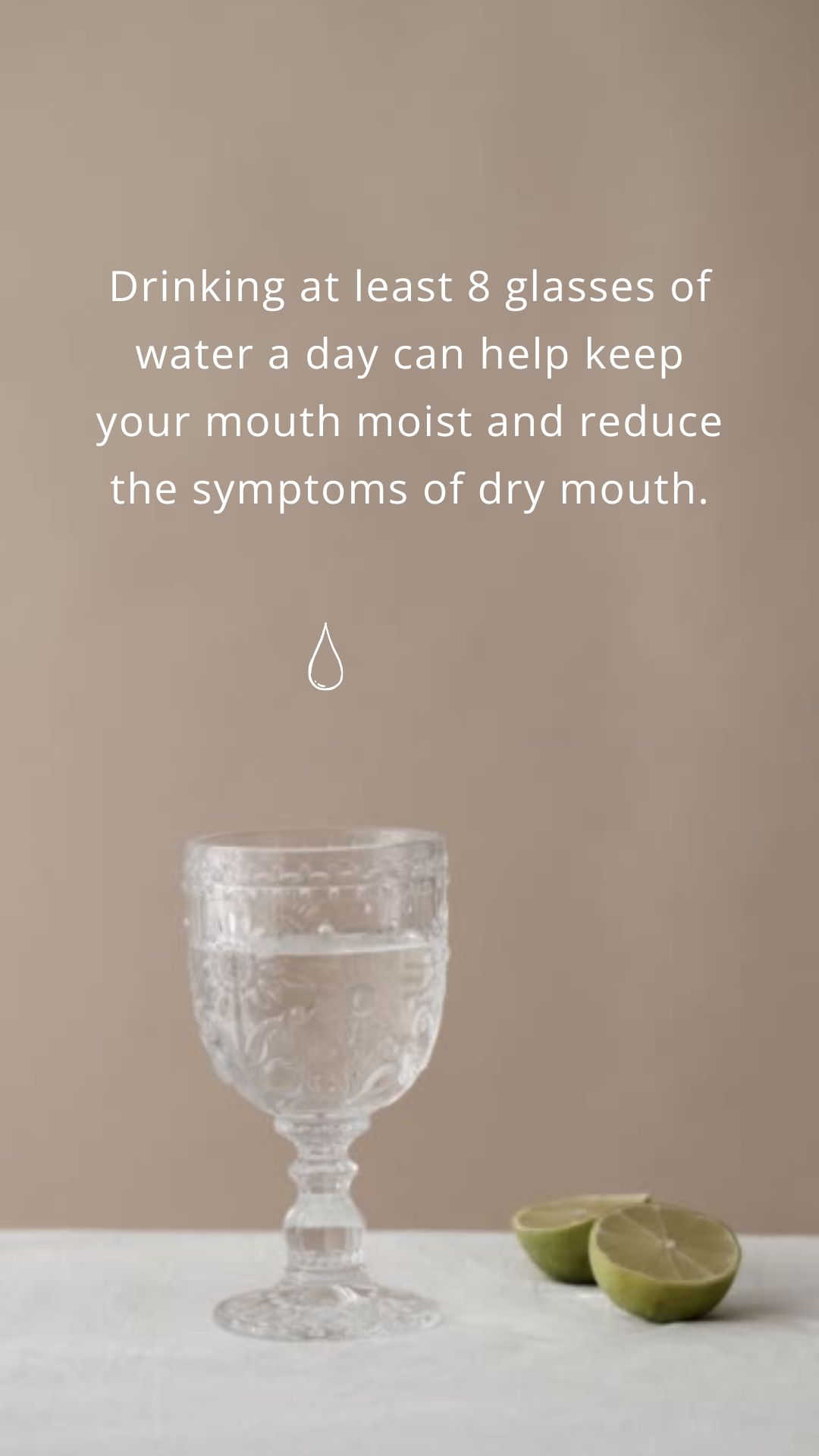Understanding Xerostomia: What Causes It?
Xerostomia can result from various factors, and identifying the root cause is the first step towards effective treatment. The research of MDPI Indicates that up to 38.4% of older adults experience xerostomia due to age-related changes in salivary gland function. Medications are a leading cause of dry mouth, with over 500 different medications listed as potential culprits, including antihistamines, antidepressants, and diuretics. Additionally, conditions like diabetes, Sjogren’s syndrome, and Parkinson’s disease are often associated with chronic dry mouth.
Radiation therapy for head and neck cancers is another common cause, affecting the salivary glands and reducing saliva production.
Recognizing the Symptoms: Is It Xerostomia?
Identifying the symptoms of xerostomia is crucial for timely intervention. Approximately 30% of people with dry mouth report difficulty speaking and swallowing, significantly impacting their daily life. Common symptoms include a sticky or dry sensation in the mouth, frequent thirst, sore throat, and a burning sensation on the tongue. Many individuals also notice cracked lips, a dry feeling in the throat, and persistent bad breath.
In severe cases, xerostomia can lead to difficulty chewing and swallowing, making it hard to eat certain foods. Left untreated, it can also result in fungal infections like oral thrush, further complicating oral health. Early recognition of these symptoms allows prompt action, minimizing the risk of more severe complications.
How to Get Rid of Xerostomia: Effective Remedies and Treatments
Addressing xerostomia requires a multifaceted approach, combining lifestyle changes, home remedies, and medical treatments. Here are some proven methods to alleviate and eliminate dry mouth:
1. Stay Hydrated
Staying adequately hydrated is crucial for maintaining saliva production. Research shows that dehydration is a leading cause of transient xerostomia.

Additionally, sipping water throughout the day, especially during meals, can aid in swallowing and digestion.
5 simple tips to stay hydrated this summer: Learn more about proper hydration.
2. Use Sugar-Free Gum or Lozenges
Chewing sugar-free gum or sucking on sugar-free lozenges stimulates saliva flow. Studies have shown that chewing can increase saliva production by up to 10 times, which helps alleviate dry mouth symptoms. Opt for products containing xylitol, a natural sweetener that stimulates saliva and helps prevent tooth decay.
Sugar-free chewing gum: Discover the benefits of sugar-free gum.
3. Avoid Caffeine, Alcohol, and Tobacco
Caffeine, alcohol, and tobacco are all known to exacerbate dry mouth by decreasing saliva production. Studies indicate that caffeine consumption can reduce saliva flow by 26%, leading to a drier mouth. Alcohol has a similar effect, and tobacco use is a major contributor to dry mouth, especially in smokers. Reducing or eliminating these substances from your daily routine can significantly improve xerostomia symptoms.
Does Coffee Cause Gum Recession?: Learn the effects of coffee consumption on gum recession.
4. Practice Good Oral Hygiene
Maintaining excellent oral hygiene is essential for managing xerostomia. Brushing your teeth at least twice daily with fluoride toothpaste helps prevent cavities and gum disease, common in people with dry mouth. Alcohol-free mouthwash can further protect your oral health without drying out your mouth.
Flossing daily and scheduling regular dental check-ups are also crucial. Dentists can provide professional cleaning and suggest additional treatments, such as fluoride treatments or prescription mouth rinses, to help manage xerostomia.
5. Consider Saliva Substitutes
Saliva substitutes or oral moisturizers are available over-the-counter and can provide temporary relief from dry mouth. These products mimic the properties of natural saliva, helping to keep your mouth moist and comfortable. They come in various forms, including sprays, gels, and rinses, and can be used throughout the day as needed.
For individuals with severe xerostomia, prescription medications like pilocarpine or cevimeline may be recommended. These medications stimulate saliva production and are often used when other treatments have not provided adequate relief.
6. Monitor Your Diet
Certain foods can worsen xerostomia, while others can help alleviate it. Spicy and salty foods can irritate a dry mouth, making symptoms worse. On the other hand, soft, moist foods are easier to chew and swallow, making them more suitable for individuals with dry mouth. Including more soups, stews, and sauces in your diet can help keep your mouth moist during meals.
Avoid sugary foods and drinks as they increase the risk of tooth decay, a common issue for people with xerostomia. Instead, focus on a balanced diet of fruits, vegetables, and whole grains to support overall health and well-being.
When to See a Dentist or Doctor
If xerostomia persists despite trying home remedies and lifestyle changes, it’s essential to consult a healthcare professional. Chronic dry mouth can lead to serious dental problems, including tooth decay, gum disease, and oral infections, if left untreated. Your dentist can assess your symptoms and recommend fluoride varnishes, prescription mouthwashes, or medications to stimulate saliva production.
In some cases, underlying medical conditions like Sjogren’s syndrome or diabetes may contribute to dry mouth. A thorough medical evaluation can help identify these conditions, allowing for appropriate treatment and management.
To Seek Help: Contact Us.
End of How to Get Rid of Xerostomia?
Xerostomia is a common but manageable condition. Understanding the causes, recognizing the symptoms, and implementing effective treatment strategies can significantly improve your quality of life. Whether through simple lifestyle changes, home remedies, or medical treatments, there are numerous ways to get rid of xerostomia and keep your mouth healthy and comfortable.
Always remember to stay hydrated, practice good oral hygiene, and consult with your dentist if you experience persistent dry mouth. With the right approach, you can take control of xerostomia and enjoy a healthier, happier mouth.

